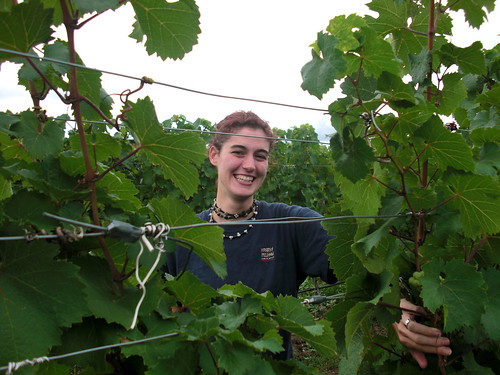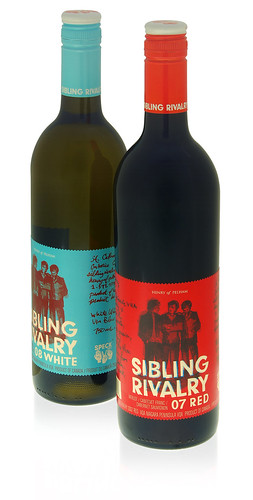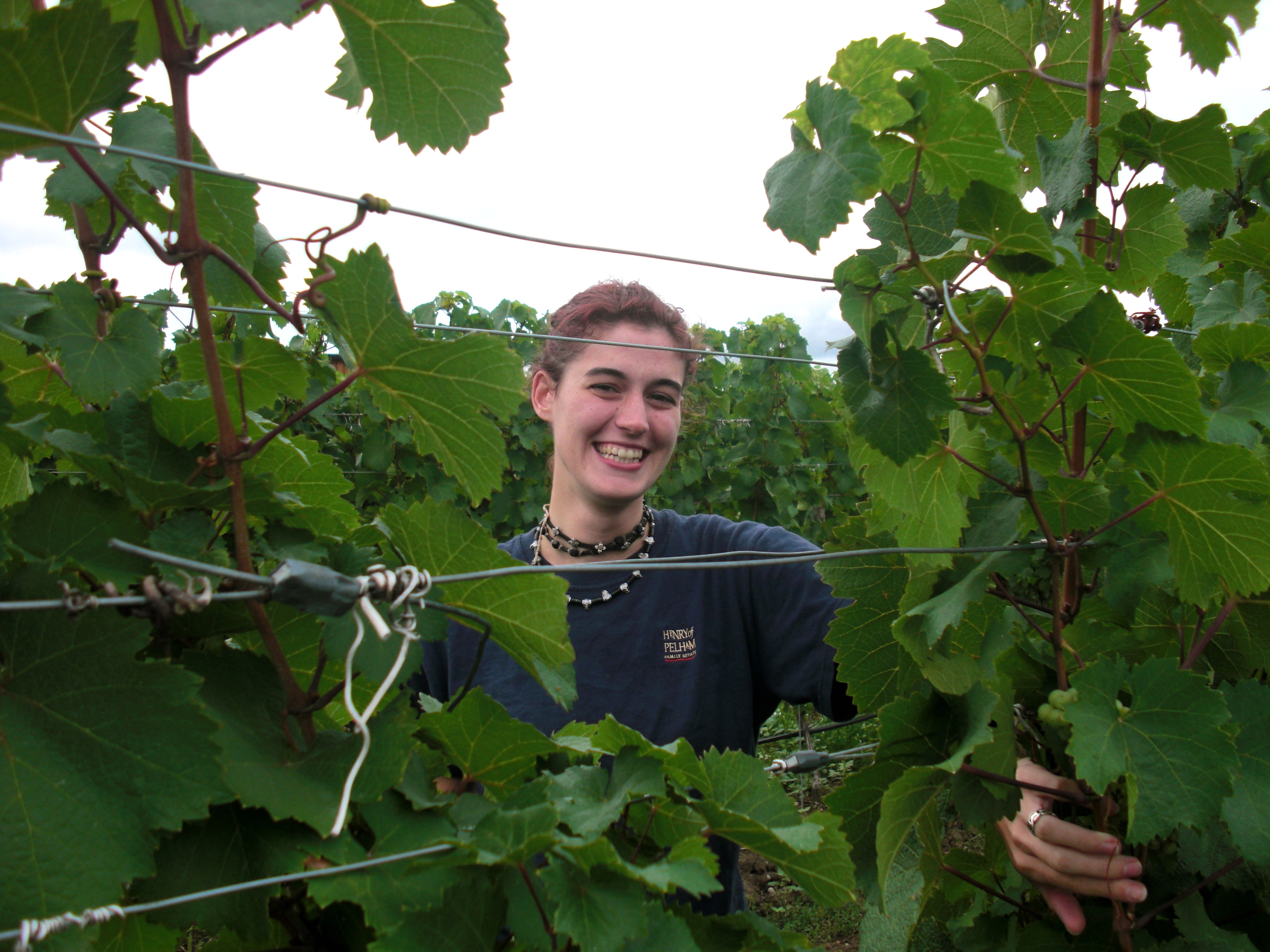
Note: We are following the 2011 grape harvest in Niagara through the writings of several Niagara insiders. This is the fifth post from Melissa Smits (in above photo), a cellar/winery technician at Henry of Pelham Family Estate Winery. This is Part XII of our #Harvest2011 reports.
By Melissa Smits
There’s probably some ’90s song about rain that I could reference this week, but I think we’re all getting a little exhausted with the topic of precipitation.
It comes and goes; so emerges the same idea as in my last report. When it’s not falling, we bring in a lot of fruit.
We’ve already crushed as much as last year’s total tonnage, and it’s not over yet. This year there seems to be a heavier crop across the board in terms of varieties for table wines.
The Riesling we’ve been bringing in in the last week has been in nice condition in spite of the hovering risk of botrytis or sour rot infection; we’ve just finished bringing it in on Monday.
It’s been beautiful stuff, and has been very patient with us as we manoeuvre volumes around the winery, making sure we have enough space to do what we have to do, when we have to do it.
There’s an order of operations now as we’ve started in on home stretch—suddenly there’s lots of new wine in the building!
Much of what we’ve harvested for reds and rosé production at this point has been Merlot and a little bit of Cabernet Franc and Syrah. I know that as Merlot starts to come in, we’re not far off from the finishing of our table wine harvest. After the Cabernet varieties, all that’s left is Late Harvest and Icewine grapes.
 Since I started at Henry of Pelham in 2008, I’ve slowly come to realize just how important Merlot is. Harvest in 2008 came and went, cool and rainy, and we blended the first batches of our Sibling Rivalry Red and White.
Since I started at Henry of Pelham in 2008, I’ve slowly come to realize just how important Merlot is. Harvest in 2008 came and went, cool and rainy, and we blended the first batches of our Sibling Rivalry Red and White.
In 2009, we saw the Cabernet varieties struggling near this home stretch. It was cold weather around this time, and high acid levels stayed stubbornly fixed in place. The Merlot that came in, however, had a good sugar and acid balance — even if the acids were higher than desired.
So it became pleasing to see this variety that could ripen reliably and work with it to make the Sibling Rivalry in the years that followed the introduction of the blend. We had to make a lot of that wine; Merlot makes up a considerable proportion of the Red. I wrote last time about keeping the inconsistency of vintages far from our perceptions of regional wine quality. This week I’d like to play the same tune, but a little differently.
Niagara has become a hub of wine tourism. People come from near and far to try things out, and local favourite wines emerge. Different people have different favourites. Sometimes people want wines that need some aging; or people want a wine that’s ready now.
Sometimes people want to compare vintages of their favourites to see the differences of expression across the years; still others want to be able to return to the wine year after year and find something familiar with it.
Familiarity might just be the reason that it’s important to discover the varieties that produce more consistent wines here in the Niagara region.
Memories tend to have strong sensory elements; to open a bottle of a proprietary blend from a different vintage than the first can still provide a reminiscent experience.
No two harvests are ever the same. We always have a different crew every year, and yet our wines are distinctly ‘Henry of Pelham’.
It’s not just our soil that attributes that character (even as it is difficult to pinpoint exactly what that essential character is). The things that exist at the heart of the winery tend to be rooted in the things we can rely on, Merlot and Riesling included, whether on their own or as bases for the blends we craft. While we expand our profile and introduce new styles and varietals, we recognize how important it is to keep “homestyle” wines in the cellar.
In general, in the face of stresses, it’s always good to have something familiar to return to.
Thanks for reading!
Melissa Smits







Comment here